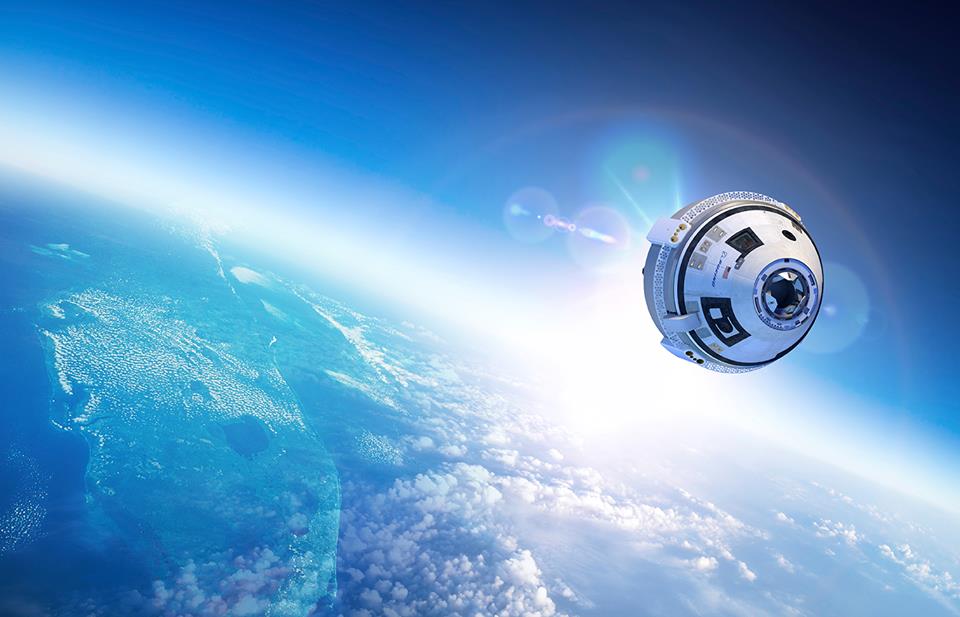
For the second time this year, Boeing has received a Post-Certification Mission (PCM) order from NASA to perform a dedicated crew rotation mission to the International Space Station (ISS), under the requirements of its $4.2 billion Commercial Crew transportation Capability (CCtCap) agreements. Having been jointly selected in September 2014, alongside SpaceX, to restore the capability to launch U.S. astronauts aboard U.S.-built vehicles, and from U.S. soil, for the first time since the end of the Space Shuttle era, Boeing’s CST-100 spacecraft—recently renamed the “Starliner”—received its initial PCM order in May 2015. SpaceX followed suit when it gained its first order in November, although it remains to be seen which of the two commercial providers will be chosen to stage the eagerly awaited U.S. Crew Vehicle (USCV)-1 flight, scheduled to deliver four astronauts and cosmonauts and around 220 pounds (100 kg) of pressurized cargo to the station, no sooner than May 2018.
Yesterday (Friday), NASA announced that it had awarded Boeing a second PCM. When one counts SpaceX’s own initial award from November, this represents the third of four guaranteed orders under the language of the CCtCap contract, whose value is expected to top $6.8 billion across both companies. Between them, Boeing and SpaceX are expected to fly a minimum of two and a maximum of six crew-rotation missions to the space station, beginning with USCV-1. “Boeing met the criteria for NASA to award the company its second mission,” it was reported, “with the successful completion of interim developmental milestones and internal design reviews of its Starliner spacecraft, United Launch Alliance (ULA) Atlas V rocket and associated ground system.” As described by AmericaSpace’s Mike Killian earlier this year, Space Launch Complex (SLC)-41 at Cape Canaveral Air Force Station, Fla.—from which site Atlas V 422 boosters will deliver Starliners into orbit—is receiving significant enhancements to render it capable of supporting human missions, including a 200-foot-tall (60-meter) Crew Access Tower.
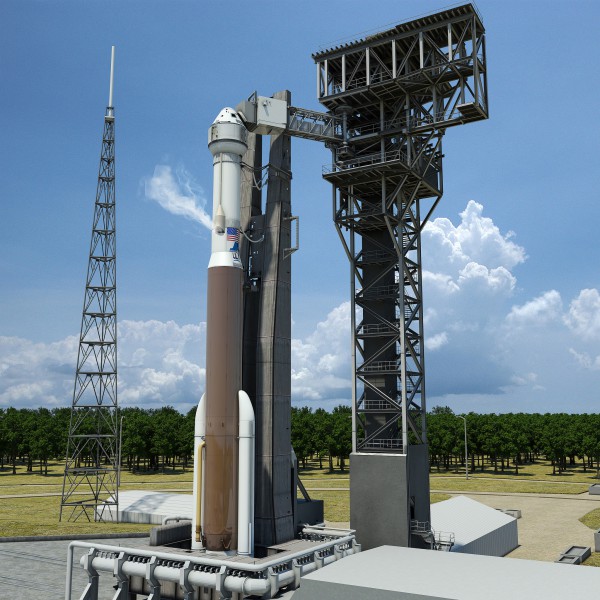
As noted previously by AmericaSpace, both companies are already tasked with staging an unpiloted demonstration flight and a subsequent crewed test flight of their respective vehicles, all of which will voyage to the ISS. SpaceX currently plans to stage the 30-day unpiloted mission of its Crew Dragon as soon as December 2016—a target which may meet with some delay, following last summer’s catastrophic Falcon 9 booster failure during ascent—before executing a 14-day crewed test flight by April 2017. Boeing, meanwhile, is aiming to stage its 30-day unpiloted Starliner mission in April 2017, followed by a 14-day crewed flight the following July. Last July, veteran shuttle and ISS fliers Suni Williams, Eric Boe, Doug Hurley and former Chief Astronaut Bob Behnken were assigned to the first Commercial Crew training group and are closely following the development of the Starliner and the Crew Dragon, ahead of receiving flight assignments to their early missions.
However, the dates for the unpiloted and crewed test flights met with some doubt, as NASA struggled throughout the first half of 2015 to secure full Congressional funding for the Commercial Crew Program and the frustration of Administrator Charlie Bolden was barely veiled in a 5 August 2015 letter to the leadership of the committees responsible for the space agency’s annual budget. In his letter, Gen. Bolden denounced the continued lack of adequate funding for the program and announced a $490 million modification to the uneasy contract with Russia, which currently provides the United States with its sole means of getting astronauts to the space station.
The General’s words came only weeks after the Senate Appropriations Committee cut $344 million—a 27 percent reduction—from the Commercial Crew Program budget and he noted that reductions from the Fiscal Year (FY) 2016 budget would “result in NASA’s inability to fund several planned CCtCap milestones in FY2016” and would “likely result in funds running out for both contractors during the spring/summer of 2016”, thus inducing additional schedule slippage and increased costs. In making its announcement of the SpaceX award yesterday, NASA cautioned that if it “does not receive the full requested funding for CCtCap contracts in FY2016 and beyond”, it would have no alternative but “to delay future milestones for both U.S. companies and continue its sole reliance on Russia to transport American astronauts to the space station.”
The situation appeared to have met with kinder following winds in recent days, as Congress fully funded the Commercial Crew Program in 2016, awarding $1.24 billion, which was the exact amount requested by President Obama. “The final budget deal comes after protracted negotiations between the House and Senate,” noted an Ars Technica article, dated 16 December. “It allocates a total of $19.3 billion to NASA for the coming fiscal year, which is $756 million above the President’s request.”
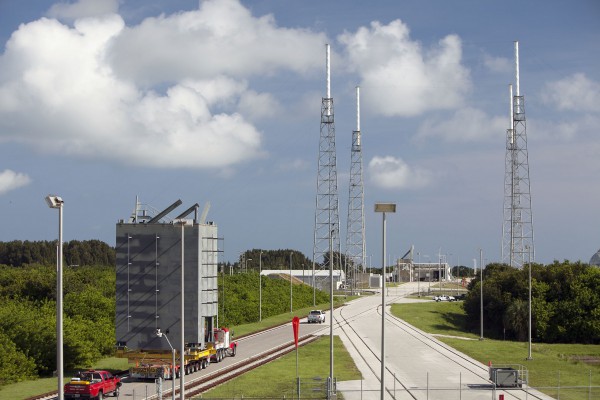
Although the USCV-1 mission is still more than two years into the future, the long lead-times associated with each PCM order “provide time for each company to manufacture and assemble the launch vehicle and spacecraft”, as well as satisfactorily completing a thorough certification process. Each Starliner will ride atop ULA Atlas V—flying for the first time in its “422” configuration, with a 13-foot-diameter (4-meter) Payload Fairing (PLF), two strap-on boosters and a Dual-Engine Centaur (DEC) upper stage—whilst each Crew Dragon will fly aboard SpaceX’s upgraded Falcon 9, previously known informally as the Falcon 9 “Full Thrust” (FT) or “v1.2”.
For Boeing, the coming months are significant, as it passes the centenary in July 2016 of its founding by aviation pioneer William E. Boeing. “As our company begins its second century, our Starliner program continues Boeing’s tradition of space industry innovation with commercial service to the space station,” said John Mulholland, vice president and manager of Boeing’s commercial crew program. “We value NASA’s confidence in the Starliner system to keep their crews safe.”
“Once certified by NASA, the Boeing CST-100 Starliner and SpaceX Crew Dragon each will be capable of two crew launches to the station, per year,” said Kathy Lueders, manager of NASA’s Commercial Crew Program. “Placing orders for those missions now really sets us up for a sustainable future aboard the International Space Station.”
Following their unpiloted and piloted certification missions, both Boeing and SpaceX will clear significant hurdles to allow them to press ahead with their PCM commitments. A “standard” PCM will carry up to four NASA or NASA-sponsored astronauts and cosmonauts and about 220 pounds (100 kg) of pressurized cargo, allowing for the eventual expansion of ISS expedition crews from six to seven members. Both the Starliner and the Crew Dragon are capable of remaining docked at the station—via International Docking Adapters (IDAs) at the forward and space-facing (or “zenith”) port of the Harmony node—for as long as 210 days and will serve as assured crew return vehicles during that period.
“With the Commercial Crew vehicles from Boeing and SpaceX, we will soon add a seventh crew member to International Space Station missions, which will significantly increase the amount of crew time to conduct research,” said Kirk Shireman, manager of the ISS Program. “This will enable NASA and our partners to ramp up the important research being done every day for the benefit of all humanity.”
As Boeing and SpaceX head towards their unpiloted and crewed test flights and their opening PCMs thereafter, their combined efforts will mark the first launches of U.S. astronauts, aboard U.S.-manufactured spacecraft, and from U.S. soil, in more than six years, roughly equivalent to the 1975-1981 gap between the twilight of the Apollo era and the maiden voyage of the shuttle. Both piloted test flights will feature a two-person crew, with the inaugural voyage of Boeing’s Starliner expected to carry an “in-house” test pilot and a NASA astronaut—in keeping with the company’s flight-test heritage—whereas SpaceX’s Crew Dragon is expected to reserve both seats for NASA fliers. AmericaSpace was told by SpaceX earlier in 2015 that there is “no current plan for a SpaceX pilot or engineer on any of the flights” and, moreover, that the company does not have its own “cadre of folks in training or selected.” It is believed that SpaceX originally intended to fly at least one of its own crew members on the piloted test flight, but NASA opted against this.
Be sure to “Like” AmericaSpace on Facebook and follow us on Twitter: @AmericaSpace




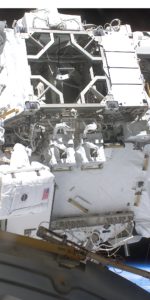
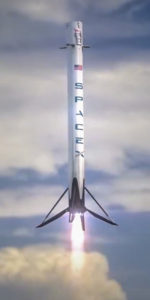
I expect the Starliner to fly a couple crews to the ISS before it becomes uninhabitable due to maintenance problems. And that will be the end.
If that is the case, then, expect the same from the Orion spacecraft. Because Boeing is building the Starliner to have many of the same features as Lockheed’s Orion, but, optimized for LEO/ISS operations. Something about reducing crew training times between the Orion & Starliner systems.
Arth,
Orion & Starliner are two different vehicles being built to different requirements. Boeing is building the Starliner to have as much common crew interface with Orion as possible to reduce crew training time to be able to fly both vehicles.
However, “behind the dashboard” (so to speak) the two vehicles are very different. That is not because of different design philosophies between Boeing and Lockheed, but different design requirements.
An example (among many) is the redundancy requirement in case of a Life Support Systems fan failure:
(1) For the Starliner the backup is oversized breathing air tankage. If a fan fails the breathing atmosphere is maintained by blow down of the excess gases. This because reentry is no more than hours away.
(2) For Orion they have a redundant fan system. That requires not only the redundancy in fans, but also ducting and increased power/cooling requirements. All of that makes Orion heavier/more complex, but is needed because reentry may be days or longer away.
If a market for LEO transport (currently only the ISS) goes away, then the Starliner has no destination. Conway believes that the ISS will be abandoned and no new LEO market will materialize. Both those assumptions are debatable, but Conway consistently asserts them.
Absent a credible BEO mission (which I do not believe the Mars goal to be) Orion is also without a market.
I personally believe there should be both LEO & BEO activity, which would give both Orion & Starliner destinations for which they are optimized.
Unfortunately, under the current non-space plan imposed on this country neither exists. Therefore (sadly), at the moment both Orion & Starliner will be “all dressed up with no place to go”.
You might be comfortable with “both LEO & BEO activity” Joe but I think that attitude is divisive and self-defeating.
The first funded mission for the SLS is going to be Europa. These science missions are a diversion from what everyone knows the SLS was created for: it was always a Moon rocket. What is sad is the time and treasure wasted on LEO. Within ten years the ISS, Starliner, and the entire SpaceX inventory of junk will be gone and all that will be left is the SLS and the Moon.
Conway
Don’t forget Bezos. If Starliner & Dragon are gone in 10 years, then, Blue Origin will get the future NASA contracts. And their mega-billionaire owner has the funds to invest in his ventures.
“Each Starliner will ride atop ULA Atlas V—flying for the first time in its “422” configuration, with a 13-foot-diameter (4-meter) Payload Fairing (PLF), two strap-on boosters and a Dual-Engine Centaur (DEC) upper stage—whilst each Crew Dragon will fly aboard SpaceX’s upgraded Falcon 9, previously known informally as the Falcon 9 “Full Thrust” (FT) or “v1.2”.”
If, “Unfortunately, under the current non-space plan imposed on this country neither exists.
Therefore (sadly), at the moment both Orion & Starliner will be ‘all dressed up with no place to go'”, then obviously “Crew Dragon” will also be “‘all dressed up with no place to go'” and that simply wouldn’t be acceptable to the great, very influential, and high tech state of California, so an early demise of the ISS is both logically and politically unlikely.
Probably the ISS will continue to fly for many decades into the future because it is in an internationally easy to access, easy and quick to return from, Galactic Cosmic Ray and solar radiation minimized, and lowest risk and cost orbit.
Many countries can see the diverse risk minimizing, political, cost, technical, and scientific advantages of doing research, testing equipment, and training future long-term Lunar and Mars mission crews at the ISS.
Storing, refurbishing, stacking, resupplying, and staging Lunar, Mars, Ceres, and other beyond LEO mission reusable spaceships, habs, space tugs, and Landers at a modified and enhanced ISS may be a wise risk minimizing and cost reducing option.
Maintaining and checking on the health of people and machines at the ISS is probably less risky and costly than anywhere else in cislunar space.
Besides, Congress likes the positive image, glowing international publicity, and high tech ‘good vibes’ motivating factor for Earth’s students that is frequently provided by the ISS.
After all, the ISS is a very large, inspirational, and permanently crewed spaceship that can actually be eyeballed traveling across the dark sky by almost all the folks on our planet.
International politicians, such as Russia’s President Vladimir Putin, making inspection flights to the ISS may someday occur.
With a pro commercial international space policy, actors showing up to make movies, or reality based computer games, at the ISS may also eventually occur.
Staging a competition between top ‘Intergalactic Space War’ computer game players at the ISS might even be possible someday.
ISS space tourism is already a reality. Time and the quality of our space transportation systems will tell if, or how fast, it will grow.
James,
Do not misunderstand me, I have nothing against the ISS. I am just going by the current situation.
For instance, the Russians are contemplating dropping out of participation in ISS after 2020, in order to build their own independent station. That station (if built) would be used specifically for earth observation of Russian territory and to support their Lunar Program. They would of course use their own crew/cargo vehicles.
If India, Japan, or China start sending human spacecraft to the ISS, why would it be economically and politically wise for Russia to leave and build their own space station when they could be focusing their human space budget on staging international Lunar missions from the ISS?
Note the ISS should outlast Russia’s current political leadership.
As long as the ISS exists, the Russians will most likely remain involved with it.
And as I quoted previously, “From a scientific and exploration standpoint, Lindgren described the ISS as ‘a bridge’ and Kelly added that, despite its steadily increasing age, he had not noticed that he was spending any more time on maintenance or repairs since his previous expedition on Expedition 25-26 in 2010-2011.” From: ‘NASA Observes 15 Years of Unbroken Residency Aboard International Space Station’ by Ben Evans. At: http://www.americaspace.com/?p=88088
As ISS systems evolve and are improved for new and larger modules, we should see much lower amounts of time spent “on maintenance or repairs”.
And, last I heard, 2032 was probably doable with the current modules. New and much larger and robust modules lifted uphill by the SLS should be doable in the mid 2020s to late 2020s.
If we are serious about folks going to the Moon, Mars, and Ceres, then lots of useful research needs to be done first in LEO.
“Paul Spudis says:
December 24, 2015 at 10:42 am” we read
“‘And what is this obsession with Mars?'”
“Simple — it’s easier and cheaper to ‘talk’ about going to Mars in 20 years than it is to actually accomplish a lunar return within a few years. There’s no accountability for the former whereas in the latter, you must make substantial progress and will be held responsible for not fulfilling the mission.” See: http://www.spudislunarresources.com/blog/spacexs-accomplishment/#comment-5066
Of course the lower risk and “cheaper” backup to human Lunar exploration and ISRU work, is, has been, and will remain the International Space Station.
An expanded ISS could and should also be used for early experiments with the ‘Beam is the Dream’ to dramatically improve Isp options for launchers.
An expanded ISS could also see the extensive and needed testing of large Variable Specific Impulse Magnetoplasma Rocket (VASIMR) propulsion units.
Much larger and more capable solar power units for an expanded ISS would be useful for both ‘the Beam’ and VASIMR testing.
“I personally believe there should be both LEO & BEO activity, which would give both Orion & Starliner destinations for which they are optimized.”
Currently the ISS is the only available destination. Starliner optimization will pick up as future destinations become available(hopefully). As for as the SLS/Orion, it still needs an extended duration module for cislunar operations longer than 2 weeks. Congress set aside 55 million dollars for an interim module to be developed and deployed in cislunar space in the omnibus.
“Congress set aside 55 million dollars for an interim module to be developed and deployed in cislunar space in the omnibus.”
Thanks for the information.
$55M is study money, but still it shows someone in Congress is thinking about what needs to be done.
Oh, and the other one….I don’t expect the toxic dragon to ever carry an astronaut. I guess tomorrow might decide that if it is as successful as the last one. I am keeping my fingers crossed.
Nice to see that the spirit of exploration & adventure are alive and well…..
Do you see any benefit in doing anything at all related to human spaceflight ? Your negativity is not advancing anything..
I am all about Human Space Flight Dd. But LEO is not really space and the NewSpace dog and pony show is the worst thing that has ever happened to space exploration.
You are so sick.
I used to see your rants on the various space sites (until you’re banned) and I’d visualize some pathetic, bitter old loser sitting in his mom’s basement.
But lately as see how unhinged you are, I visulize Jake Busey’s Joseph character in “Contact” as he blows up the machine.
When does rooting for the failure any non-Gary approved space effort turn into action to “save us from evil billionaires”?
Maybe we should all start using fake names and guard against revealing where we live and work.
You’re good for click stats on this site for sure, but the editors must wonder if it’s worth it.
Over the top you sick troll. Everything I write I back up with facts and my “rants” are just holding up the mirror to you and your cronies in the NewSpace mob. And you obviously can’t stand it. Thanks for validating my comments.
You said you’d never reply to me again. Please stick to that promise in the future.
It was meant as never again giving a polite reply to a query so you could stab me in the back. Your disgusting insults have to be answered you troll. You thought I wouldn’t?
You are one of Musk’s legion of Ayn-Rand-in-Space cyberthugs that have poisoned the well for years; name calling and bullying any who dare criticize the private space god and his hobby rocket.
se jones –
Calling someone “sick” is just an another of your attempts at bullying. And your bullying attempts would not be made in face to face situations because you are a coward that seems to enjoy attempting to do Internet bullying.
Unfortunately for your bullying attempts, many folks besides Conway Costigan cannot accept the mixed message Mars nonsense endlessly spouted by NASA’s GCR ignoring leadership and Mr. Musk’s vague Mars retirement political huckster drivel that is endlessly used to cover up the fact that our President isn’t fully implementing the pro human lunar mission NASA law he signed.
Your attacks against those who are not Musk true believers strongly suggests that your main task here is to find joy in being a waannabe bully.
And if anyone is paying for your foolish bullying attempts, tell whoever it is that fully implementing the human Lunar surface mission ‘National Aeronautics and Space Administration Authorization Act of 2010 (PUBLIC LAW 111-267 OCT. 11, 2010)’ would be far more useful than trying to bully folks into paying for the ‘retirement plans’ of a pseudo Martian.
SpaceX’s successful launch and landing must have been gut wrenching for dinospace fanatics like you. Lol
Congratulations to Boeing on their award. And congratulations to the Commercial Crew Program on receiving full requested funding. The coming year ahead promises to be entertaining.
Congress finally decided to fully fund the CCP & the SLS/Orion(with funding for SLS missions science missions). I guess the Congress should be called Santa Clause this holiday season.